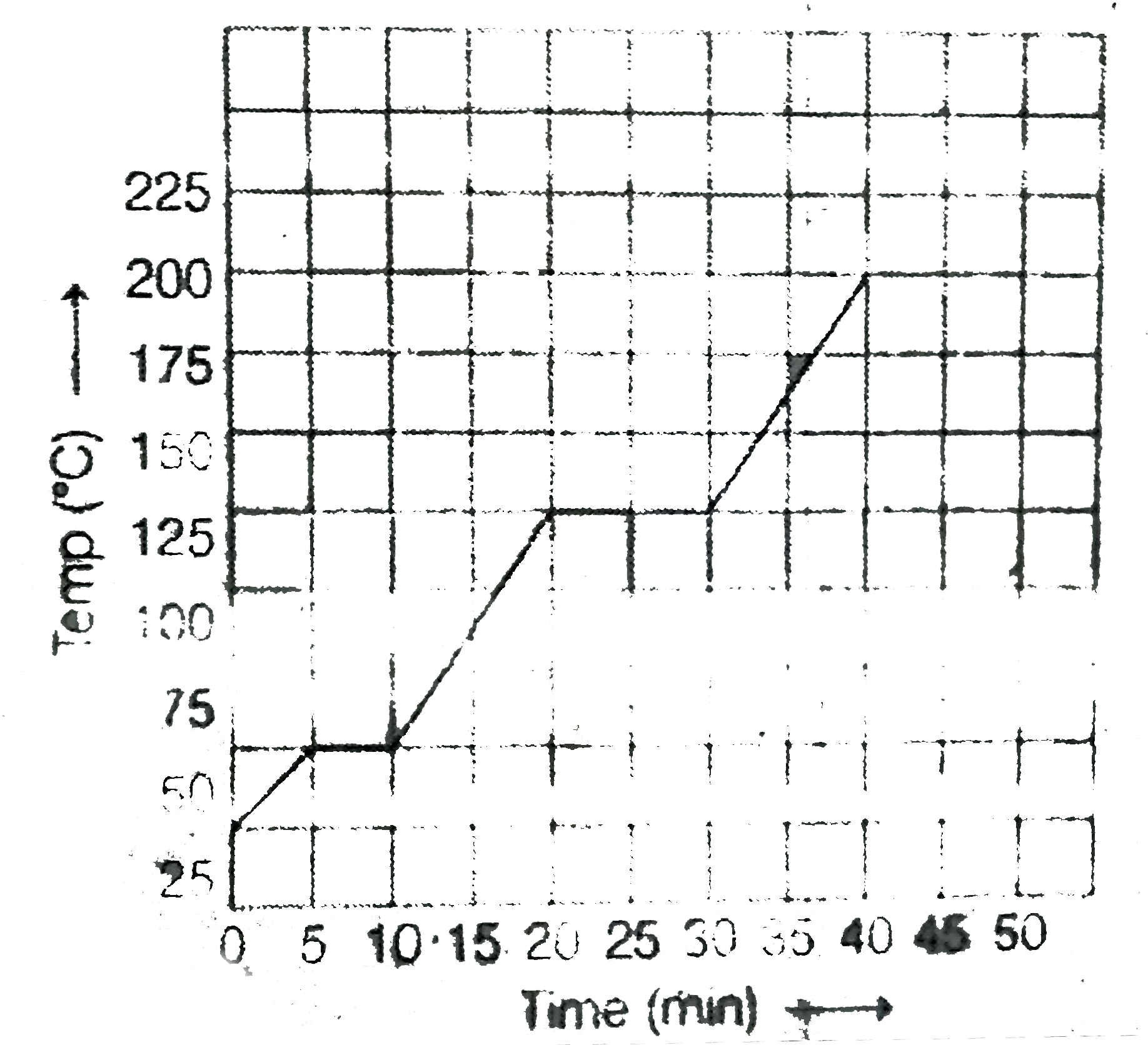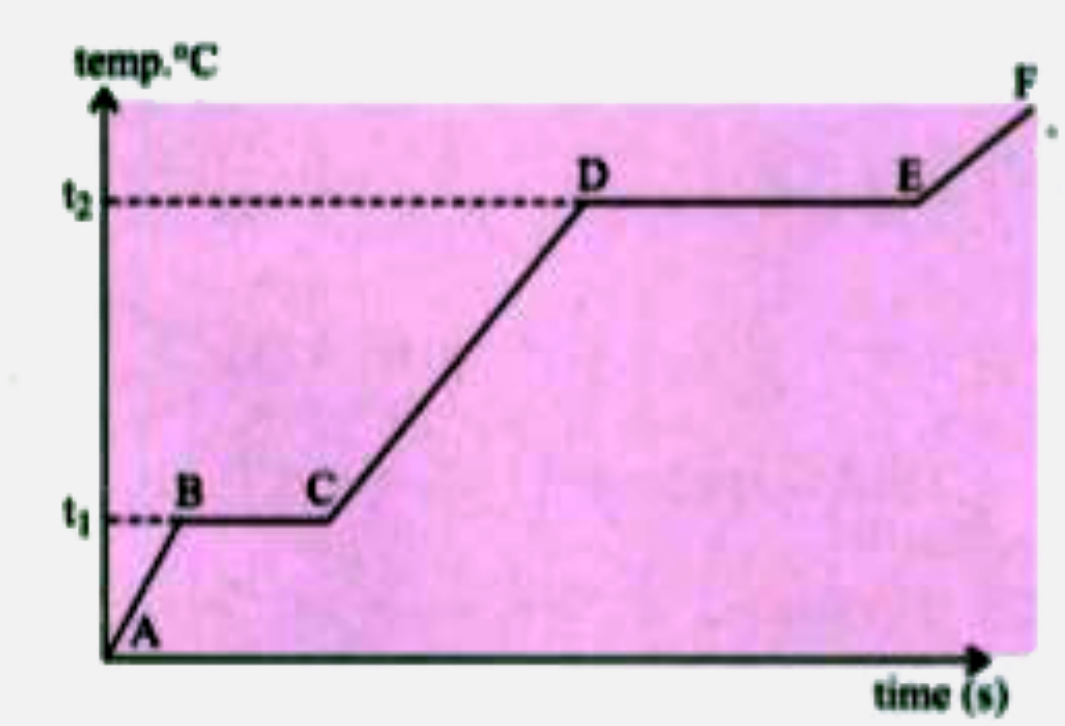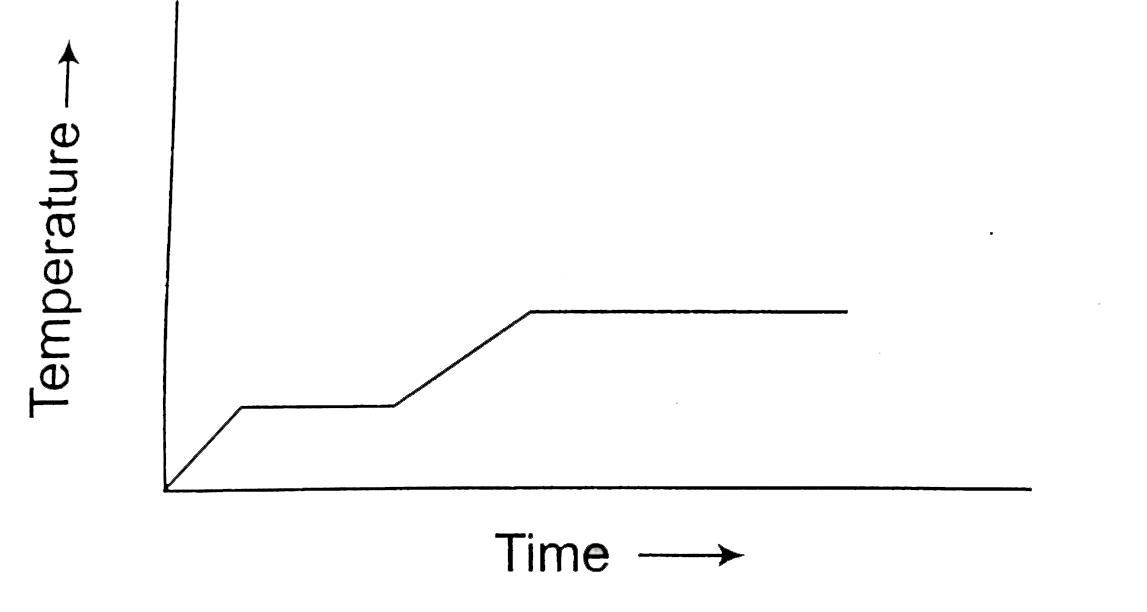The graph shown in the figure represents change in the temperature of 5 kg of a substance as it absorbs heat at a costant rate of 42 kJ min−1. The latent heat of vaporization of the substance is :

96kJ kg−1
126kJ kg−1
84kJ kg−1
12.6kJkg−1
The correct Answer is:C
Step by step video & image solution for The graph shown in the figure represents change in the temperature of 5 kg of a substance as it absorbs heat at a costant rate of 42 kJ "min"^(-1). The latent heat of vaporization of the substance is : by Physics experts to help you in doubts & scoring excellent marks in Class 11 exams.
Updated on:21/07/2023Topper's Solved these Questions
Similar Questions
Heat required to raise the temperature of 1 mole of a substance by 1∘ C is called
View SolutionThe amount of heat required to change the state of 1 kg of substance at constant temperature is called
View SolutionThe diagram below shows the change of phases of a substance on a temperature vs time graph on heating the substance at a constant rate.

What is the boiling and melting point of the substance ?
View SolutionThe amount of heat measured in calories needed to raise the temperature of 1 gram of substance by 1 degree centigrade is known as
View Solution
Heat is supplied to a certain homogeneous sample of matter, at a uniform rate. Its temperature is plotted against time, as shown Which of the following conclusions can be drawn?
(i) Its specific heat capacity is greater in the solid state than the liquid state.
(ii) Its specific heat capacity is greater in the liquid state than in the solid state.
(iii) Its latent heat of vaporization is greater than its latent heat of fusion.
(iv) Its latent heat of vaporization is smaller than its latent heat of fusion
View SolutionWater at 0∘C was heated until it started to boil and then until it all changed to steam. The time required to heat water from 0∘C to 100∘C is 5 min and the time to change boiling water to steam is 28 minutes. If the flame supplied heat at a constant rate, the specific latent heat of vaporization of water (neglecting heat losses, container etc. is (in J/g). (specific heat of water s =4.2J/g )
View SolutionIn figure , heat is added to a pure substance in a closed container rate. A graph of the temperature of the substance as a function of time is shown here , If LF = heat of fusion and LV= heat of vaporization . What is the value of the ratio LV/LF for this substance ?
_E01_035_Q01.png)
View SolutionThe diagram below shows the change of phases of a substance on a temperature vs time graph on heating the substance at a constant rate.

Why is the slope of CD less than slope of AB ?
View SolutionThe amount of heat required to raise the temperature of 75 kg of ice at 0oC to water at 10oC is (latent heat of fusion of ice is 80 cal/g, specific heat of water is 1 cal/goC)
View SolutionA beaker contains 0.1 kg of water, initially at room temperature (20∘C). If the specific heat of water is 4.2 kJ/kg⋅∘C and the latent heat of vaporization is 2,300kJ/kg, how much thermal energy would the water need to absorb to turn completely to steam?
View Solution
